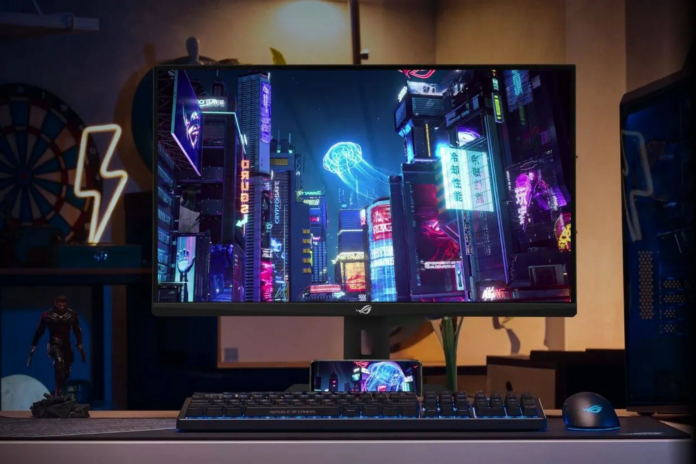We’ve come such a long way from the first high refresh rate LCD. Refresh rates continue to rise well past the 144hz mark and response times continue to lower along with it. 240hz had a noticeable increase in responsiveness, but many can’t tell the difference beyond that. We’ve cracked into the realm of 500hz, but at what cost? Is there actually any reason to buy one of these ultra-high refresh rate displays? The answer is: no, you don’t need hundreds of hertz, and here’s why.
Related 5 reasons why you don’t really need a 240Hz monitor Ultimate framerates need ultimate refresh rates. But you don’t need a 240Hz monitor for high-end gaming.
4 Motion clarity is what you should be concerned with
Ultra-high refresh rates are largely overrated
Close
High refresh rate screens are great for when you’re playing esports games that push out a ton of frames very quickly . Titles such as Rainbow 6 Siege, Counter-Strike 2, and others. These games are capable of pushing framerates well above 300 FPS. But what if you’re not playing these titles often?
If you’re not playing games that are capable of running at ultra-high refresh rates, you’ll never be able to properly take advantage of what these displays are capable of. Motion clarity is what most gamers would benefit most from. Striking a balance between refresh rate and response time is key to having the clearest visuals. OLEDs have superb response times and have motion clarity that rivals that of strobed backlights, which are found on TN panels.
Related IPS vs. VA vs. TN vs. OLED: Which gaming monitor to buy? Confused which type of gaming monitor to buy? Here’s a simple breakdown of each panel technology to help you choose.
3 Ultra-high refresh rate displays often use TN panels
TN panels sacrifice too much visual quality to make them worthwhile
If you’re looking for semi-affordable high refresh rate monitors, they’re likely to be a TN panel. IPS and OLED options are out there, but pushing in excess of 400hz comes at a hefty cost if you also want the benefits of either display. If you’re on a budget, this leaves you with TN, which is becoming less and less common as the years go on, primarily due to its poor viewing angles and mediocre contrast ratios. The features that were once its strengths are becoming commonplace on other monitor types, leaving TN on the fast-track to obsolescence.
2 Less money spent on refresh rate means more left for visual quality
If you do anything else on your PC other than play competitive games, high hertz isn’t worth the cash
Source: OBSBOT
If you don’t plan on playing anything other than esports games, there’s an argument for buying an ultra-high refresh rate monitor. However, if you plan on doing any kind of content creation or consuming a lot of media, there are much better options to suit a more rounded use-case.
If budget isn’t a consideration, buying a cutting-edge OLED allows you to have your cake and eat it too. Ultra-fast refresh rates and response times, paired with excellent contrast ratios, make for a great, “no-compromises” experience. IPS displays are also becoming part of the upper-echelon of high refresh rate displays, but you’ll likely still be paying a premium even for those.
Plus, an ultra-high refresh rate won’t be nearly as noticeable as something like the difference between a 1080p and a 1440p display, or even 1440p and 4K. It’s better to invest in that than in a higher refresh rate.
1 Ultra-high refresh rates are reserved for esports pros
Most of us can’t take advantage of the edge it may give us
When it really comes down to it, ultra-high refresh rate monitors are really reserved for those who will notice the benefit. As someone who competed in high-level competitive Counter-Strike, I’m intimately familiar with low-latency, uber-fast gear that is specifically designed for esports. In games where milliseconds matter, lowering latency as much as possible is paramount. However, upon making the switch to content creation full-time, my 480hz TN was really not cutting it for daily use.
I ended up switching to a 180hz, 27″ 1440p IPS panel and I couldn’t have been happier. It looks fantastic and is the jack of all trades I needed. I can definitely notice the decrease in refresh rate, but it doesn’t keep me from being competitive when I do return to FPS games on occasion.
Going with something “less fast” isn’t the compromise you think it is
There’s really no shame in choosing a monitor that doesn’t have a refresh rate in excess of 200hz. The jump from 144hz to 240hz was certainly noticeable for me, but anything beyond that felt like I was paying too much for the slight benefit I was getting. I’m much happier stepping down in refresh rate and stepping up in resolution, and I think the majority of users are in the same boat.




